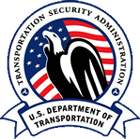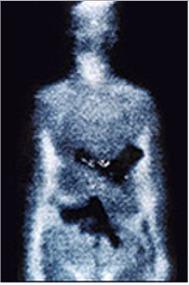Will Test RFID Technology
 The TSA says it's added two more
airports to the list of participants in its Access Control Pilot
Program. They join eight other airports which were selected
April.
The TSA says it's added two more
airports to the list of participants in its Access Control Pilot
Program. They join eight other airports which were selected
April.
The pilot program will test Radio Frequency Identification
(RFID) technology, anti-piggybacking technology, advanced video
surveillance technology and various biometric technologies.
"With this test, TSA will be able to analyze and evaluate new
technologies designed to ensure that only authorized personnel have
access to non-passenger controlled areas," Stone said. "This
cutting-edge technology will enhance the security of the aviation
system and overall further address the unique security issues at
each of the individual airports."
The two additional airports are Norman Y. Mineta San Jose
International Airport, San Jose (CA) and Helena (MT) Regional
Airport.
At San Jose, multiple technologies will be tested. They include
Global Positioning System (GPS) receivers and biometric technology
to identify and track vehicles within the secure area.
 At Helena, a vehicle tracking system
using voice recognition, an optical character reader, and a video
motion analysis technology to track a vehicle’s authorized
path in the secure area will be tested.
At Helena, a vehicle tracking system
using voice recognition, an optical character reader, and a video
motion analysis technology to track a vehicle’s authorized
path in the secure area will be tested.
Tests underway at the other eight airports include:
Boise Air Terminal/Gowen Field Airport is testing a system that
combines fingerprint biometric and RFID technology.
Miami International Airport is testing a new perimeter defense
system that will incorporate fiber optic fence netting, passive
infra-red zone control, and intelligent video analysis.
Minneapolis-St. Paul International Airport is testing a barrier
free intrusion detection system using Intelligent Video Analysis
and Microwave Zone Control.
Newark International Airport is testing a system using
fingerprint biometric technology.
Savannah International Airport is focusing on utilizing
Intelligent Video Surveillance technology.
Southwest Florida International Airport is evaluating new RFID
and wireless fingerprint biometric technology intended to enhance
the level of security at a vehicle gate.
 T.F. Green State Airport is focusing
on controlling access to a secure area via an iris biometric
recognition system. In addition, the entrance is employing
anti-piggy backing detection using RFID technology.
T.F. Green State Airport is focusing
on controlling access to a secure area via an iris biometric
recognition system. In addition, the entrance is employing
anti-piggy backing detection using RFID technology.
Tampa International Airport project is testing the viability of
portable proximity card readers and fingerprint recognition
technology.
TSA is conducting the pilot in two phases. Phase I will include
the ten airports selected testing various off-the-shelf biometric
technologies under a variety of real-world operational environments
in an effort to provide unbiased evaluations of their suitability
of use. TSA will use information obtained during Phase I to help
determine which technologies will be evaluated in Phase II
projects. Information gathered during these pilot projects will be
made available to appropriate industry representatives so they may
make informed decisions when designing access control systems to
meet security needs and regulatory requirements.
In October 2003, TSA awarded a contract to Unisys to be the
systems integrator for the pilot program. The contract has a
maximum government obligation of $17 million over 20 months.
The Aviation and Transportation Security Act (ATSA) mandated
that the "Administrator shall establish pilot programs in no fewer
than 20 airports to test and evaluate new and emerging technology
for providing access control and other security protections for
closed or secure areas of the airports. Such technology may include
biometric or other technology that ensures only authorized access
to secure areas."
 ANN's Daily Aero-Term (05.01.24): Say Altitude
ANN's Daily Aero-Term (05.01.24): Say Altitude ANN's Daily Aero-Linx (05.01.24)
ANN's Daily Aero-Linx (05.01.24) Classic Aero-TV: Korean War Hero Twice Reborn
Classic Aero-TV: Korean War Hero Twice Reborn Airborne 04.29.24: EAA B-25 Rides, Textron 2024, G700 Deliveries
Airborne 04.29.24: EAA B-25 Rides, Textron 2024, G700 Deliveries Airborne Affordable Flyers 05.02.24: Bobby Bailey, SPRG Report Cards, Skydive!
Airborne Affordable Flyers 05.02.24: Bobby Bailey, SPRG Report Cards, Skydive!





